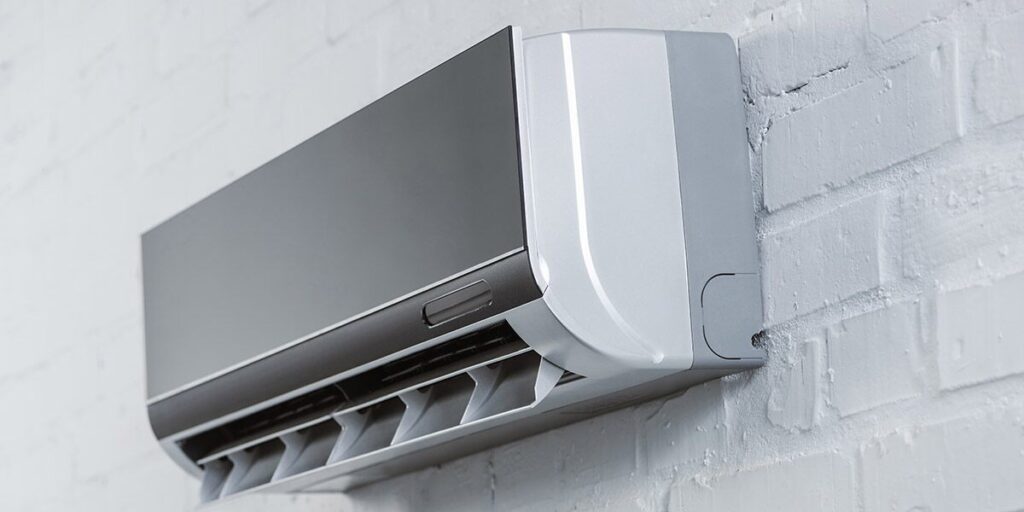Does your AC need some TLC before summer hits? Give Topline a call at (717) 628-6825 to ensure reliable cooling when you need it the most.
Air conditioners are essential for keeping your home cool during the summer, but they also play a role in dehumidifying the air that comes into your home. One of the most common AC issues homeowners experience is the AC unit leaking water, which, if left unresolved, can cause water damage and even freeze the AC. If this happens, there may be an issue with the condensate overflow switch.
As part of our AC maintenance service in Honey Brook, PA, our Topline Heating & Air team ensures your AC unit stays dry by either installing a condensate overflow switch or making sure that yours works correctly, helping to avoid water leakage and keeping your air conditioner working optimally.
Why Is Condensation a Problem in AC Units?
A typical AC unit has two major functions: cooling air and removing moisture. Air conditioners remove heat from the air by forcing a refrigerant liquid through evaporator coils, where it absorbs heat from the air. The resulting cool air goes into your home while the refrigerant carries on cycling through the AC system, continuously cooling air moving over the evaporator coils.
A natural consequence of air cooling down is that it loses its ability to hold onto water vapor. Think about what happens if you have a glass of cold water in a warm room — the outside of the glass becomes wet due to condensation.
The same thing happens on the evaporator coil; as warm air cools down, it sheds water that ends up condensing on the AC unit. If not removed, this water can cause serious problems for your entire HVAC system.
How much water condenses depends on how humid your environment is. According to the official Condensate Capture Potential Map, Pennsylvania residents experience medium to medium-high condensation levels on their AC units, which means that installing a condensate overflow switch may help keep your unit running optimally throughout the summer.
What Is a Condensate Overflow Switch?
Almost all AC units have methods to handle condensation. You will either find a drain pipe that moves water away from the unit or a drain pan that catches condensate in a pan under the unit.
While these methods are usually sufficient, you may find that during extremely humid summers, a drain line or pan isn’t enough to handle the sheer amount of condensation generated by your air conditioner. Installing a secondary drain pan overflow can help catch any additional moisture, but it’s also important to have a backup system to prevent your drain from overflowing.
Drain blockages in the condensate drain can also slow down how quickly the unit processes the excess water. If your AC unit continues running with a blocked drain line, it may eventually back up completely and damage your system and potentially your home’s structural integrity.
A condensate overflow switch detects rising levels of condensation in your drain line and will send a shut-off signal to your air conditioner once it reaches a certain level. This prevents the cooling system from creating more condensation. Once stopped, you can either drain the line or pan manually or call an HVAC technician to diagnose and repair the clog or drainage issue.
Types of Condensate Overflow Switches
Condensate overflow switches generally fit into two main categories that depend on how the switch detects water levels.
Float Switches
Float switches rely on a floating mechanism to determine the water level in your drain pan. The floating mechanism rises with the water level, and once it hits a certain point, it activates a switch that stops the AC unit from running.
If you have a horizontal AC unit, you will typically find the float switch in the secondary drain pan, while vertical units have float switches in the PVC drain pipe. No matter the system, they all work the same way to detect rising water levels.
Sensor Switches
Sensor switches rely on more sophisticated electronics to detect water. Rather than activating at a particular water level, sensor switches turn AC units off the moment they detect any water on the sensor. As these switches are smaller than float switches, technicians can install them anywhere on the drain pan, allowing for more control and sensitivity.
The Benefits of Having a Condensate Overflow Switch
Installing a condensate drain overflow switch is a relatively simple and cost-effective way of protecting your HVAC unit from excess moisture. The benefits of having a condensate overflow switch on your air conditioner typically outweigh the cost and effort of installing one, making it a worthwhile addition.
Prevent Water Damage
The main reason to install a condensate overflow switch on your secondary drain pan overflow is to protect your AC unit from water damage. Water in the AC unit can corrode certain parts and, if left unattended, may even find its way into your home’s foundations. Water damage is extremely costly to repair, and prevention is a smarter option.
Save Money
In addition to avoiding costly repairs to your air conditioner or home’s foundations, having normal moisture levels in your system means that it functions optimally. Excess moisture causes high humidity in the unit, which puts additional pressure on the cooling system and forces your unit to run harder for longer. Not only does this result in higher power bills for the same amount of cooling, but it also results in greater maintenance and repair costs.
Prevent Mold Growth
Mold thrives in moist, warm environments. A leaking air conditioner provides the perfect habitat for mold growth, which can cause health concerns, especially if the system blows moldy air into your home.
Work with Topline for All Your AC Needs
If you’re wondering why your AC unit is leaking water or want more information about various condensate overflow switches, our team at Topline Heating & Air is here to help.
Call us at (717) 628-6825 or fill in our online form to schedule a consultation today!



